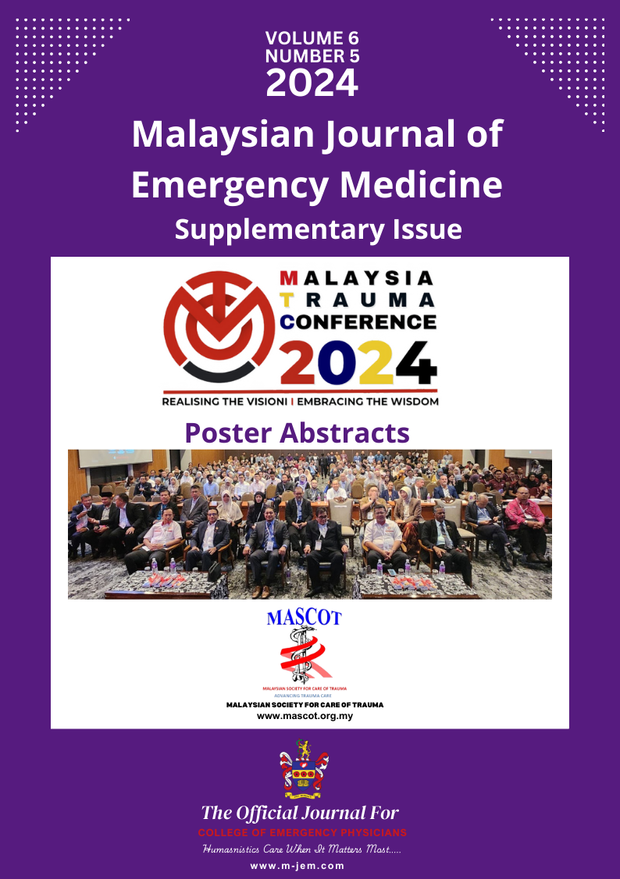A08 Can E-Fast Detect A Traumatic Diaphragmatic Hernia?
Main Article Content
Abstract
INTRODUCTION
Traumatic diaphragmatic hernia (TDH) may occur either in blunt or penetrating injury to upper abdominal region. Mortality rate in a TDH related injuries were up to 30% and remains a diagnostic challenge during primary survey. Despite not being a routine examination in Extended Focused Assessment with Sonography for Trauma (e-FAST), we found that ultrasound provides a pivotal role in early detection of this condition.
CASE DESCRIPTION
We present a case of young gentleman presented to emergency department following trauma with complaint of left sided chest and upper abdominal pain. Patient was in respiratory distress, tachycardic with saturation of 80% under room air. Clinically he had tenderness over left lower chest with guarding over left upper abdomen. FAST demonstrated free fluid accumulation over left splenorenal recess and eFAST revealed presence of sliding sign bilaterally without effusion. However, presence of peristaltic movement above left diaphragmatic margin with discontinuity of left diaphragm raised the suspicion of TDH. Urgent chest x-ray demonstrated presence of bowel gas above left hemidiaphragm confirmed the diagnosis. Patient was immediately sent to tertiary centre and urgent CT abdomen revealed ruptured left hemidiaphragm with intrathoracic herniation of abdominal content. Subsequently he underwent urgent exploratory laparotomy with primary repair of diaphragmatic hernia and recovered tremendously. He was discharged on day 15 post trauma.
DISCUSSION
Generally, TDH doesn’t have specific signs or symptoms and can only be diagnosed radiologically. Rarely patient may be presented with delayed complication of respiratory failure, strangulation, obstruction and subsequently cardiopulmonary dysfunction. Early sonographic examination provides advantage of dynamic assessment of diaphragm, thoracic cavity and intraabdominal structures could direct towards early detection and diagnosis of TDH. Ultrasound findings such as absent of lung sliding and presence pf peristaltic movement in thoracic cavity should increase the suspicion of diaphragmatic hernia following trauma.
CONCLUSION
Prompt preliminary recognition of TDH using ultrasound could provide immediate and better outcome for patient as therapeutic surgical intervention will be executed faster.
Metrics
Article Details

This work is licensed under a Creative Commons Attribution-NonCommercial 4.0 International License.

